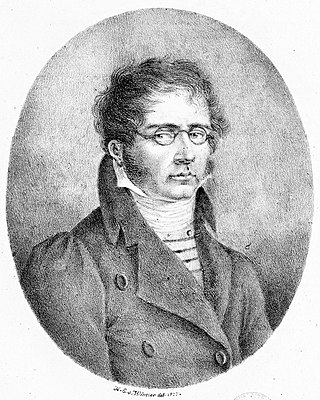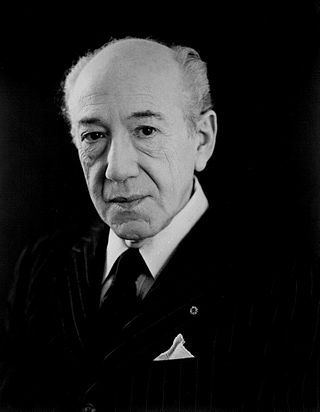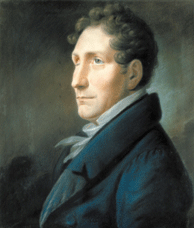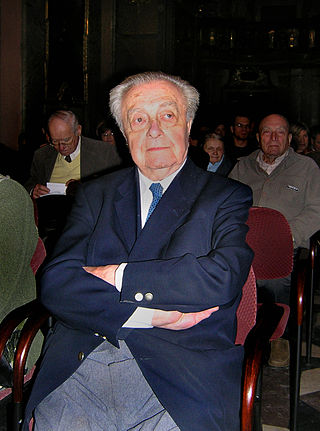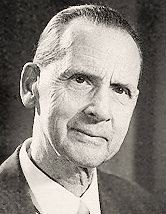- Harri Ahmas [ fr ], Sonata (1981)
- Eduardo Alemann, Sonatina, Op. 72, No. 2 (1957)
- Jurriaan Andriessen, Sonata (1989)
- Susana Antón, Sonatina
- Hans Erich Apostel, Sonata, Op. 19, No. 3 for solo bassoon (1951)
- Violet Archer, Sonatina (1978), Sonata (1980)
- Edward Arteaga, Sonata (1993)
- Vyacheslav Artyomov, Sunday Sonata (1977)
- Boaz Avni, Sonata (1996)
- Robert Baksa, Sonata (1991, rev. 2005)
- Teimuraz Bakuradze, Sonata (1965)
- Hanna Beekhuis [ nl ], Sonatina (1948)
- Richard Rodney Bennett, Sonata (1999)
- Niels Viggo Bentzon, Sonata, Op. 316 (1972)
- Olav Berg, Sonatine (1995)
- Antonio Bibalo, Sonata (1991)
- Willem Frederik Bon, Sonata for bassoon solo, Op. 32 (1970)
- Andries de Braal [ nl ], Sonatina (1966)
- Algimantas Bražinskas, Sonatina (1958)
- Victor Bruns, Three Sonatas, Op. 20 (1952), 45 (1969) and 86 (1988)
- David DeBoor Canfield, Sonata (1987)
- Romeo Cascarino, Sonata (1950)
- Mario Castelnuovo-Tedesco, Sonatina, Op. 130 (1946)
- Barney Childs, Sonata (1964)
- Arnold Cooke, Sonata (1988)
- Jean Coulthard, Lyric Sonatina (1970) [4]
- Michael Cunningham, Parisian Sonata, Op. 72 (1981)
- Paulas Dambis [ lt ], Sonata (1979)
- William D. Davis, [5] Sonata (1969)
- Edison Denisov, Sonata for solo bassoon (1982)
- Pierre Max Dubois, Sonatine Tango (1984)
- Horst Ebenhöh, Sonatine, Op. 47/4 for bassoon solo (1987)
- Helmut Eder, Sonatina, Op. 34/3 (1963)
- Benzion Eliezer [ bg ], Sonata (1969)
- Willard Somers Elliot, Sonata (1998)
- Iván Erőd, Sonata Milanese, Op. 47 (1985)
- Alvin Etler, Sonata (1951)
- Eberhard Eyser, Sonata for bassoon solo (1973)
- Ferenc Farkas, Sonatina Based on Hungarian Folk Songs for double bass, cello or bassoon and piano (1955); Sonate Romantique (1985)
- Heinrich Feischner, Sonatina (c1936) [6]
- Jindřich Feld, Sonatine (1969)
- Bjørn Fongaard, Three Sonatas, Op. 109, No. 1 (1971) and Op. 125, Nos. 14 and 15 (1973); Sonatina, Op. 126, No. 17
- Cláudio de Freitas, Sonata (1998)
- Merab Gagnidze, Sonata for bassoon solo; Sonata for bassoon and timpani
- Anatoli Garšnek [ et ], Sonatina (1974)
- Odette Gartenlaub, Sonatine (1959)
- Serge de Gastyne, Sonatina, Op. 58 (1972)
- Harald Genzmer, Sonata for bassoon solo (1974)
- Glenn Gould, Sonata (1950)
- Eduardo Grau, Sonata (1969)
- Czesław Grudziński, Sonata No. 2 (1984)
- Sofia Gubaidulina, Duo Sonata for two bassoons (1977)
- Truman Harris, Sonata Breve, Sonata for two bassoons and piano
- Anthony Hedges, Fantasy Sonata, Op. 104 (1986)
- Lennart Hedwall, Sonata for bassoon solo (1977)
- Paul Hindemith, Sonata (1938)
- Alan Hovhaness, Sonata for two bassoons (1977); Sonata for oboe and bassoon, Op. 302 (1979)
- Bertold Hummel, Sonatina (1976)
- Yuri Kasparov, Sonata-Infernale for solo bassoon (1989)
- Kjell Mørk Karlsen, Choral Sonata No. 2, Op. 13, No. 2 (1971)
- Ulysses Kay, Sonata (1941)
- Homer Keller, Sonata (1955)
- Brian Kershner, Sonata (1989)
- Valeri Kikta, Sonata No. 1 (1977); Sonata No. 2 (1979) [7]
- Ron Klimko, Sonata (1997)
| - Charles Koechlin, Sonata, Op. 71 (1918)
- Ellis Kohs, Sonata (1953)
- Serge Lancen, Sonatine (1983)
- Terje Bjørn Lerstad, Sonata, Op. 192 (1989)
- David Loeb, Two Sonatas for solo bassoon (1975, 1990)
- Otto Luening, Sonata (1970)
- Juliusz Łuciuk, Sonata (1954)
- Ivar Lunde [ nl ], Sonata, Op. 78 (1982)
- Mathieu Lussier, "White Rock" Sonata, Op. 28 [8]
- Trygve Madsen, Sonata, Op. 25
- Ernst Mahle, Sonata (1969), Sonatina (1974)
- Pierrette Mari, Sonatine (1964)
- Władysława Markiewiczówna, Sonatina (1954)
- Henri Martelli, Sonata, Op. 50 (1960) [9]
- Arnold Matz, Sonatine (1987)
- Brady McElligot, Sonata (1982)
- Georges Migot, Sonate en quatre mouvements pour basson seul (1953)
- Marcel Mihalovici, Sonata (1958)
- Isaac Mikhnovsky, Sonata (1978)
- John Mitchell, [10] Sonata, Op. 36 (1979)
- Oskar Morawetz, Sonata (1981)
- Herman Mulder, Sonata No. 5 (1944)
- Nicolas Nabokov, Sonata (1941)
- Ray Næssén, Sonata Divina
- Vaclav Nelhybel, Sonata da Chiesa No. 3 "Variations on 'Our God Almighty'" for trombone, bassoon or oboe and organ (1977)
- Lazar Nikolov, Sonata (1976) [11]
- Aleksandar Obradović, Mikrosonata II for bassoon solo (1971)
- Ivo Petrić, Sonata (1954)
- Wolfgang Plagge, Three Sonatas, Op. 43 (1989/90), Op. 74 (1993) and Op. 123 (2007)
- Francis Poulenc, Sonata for clarinet and bassoon (1922)
- Graham Powning, Sonata for two bassoons
- Gerhard Präsent, Erödiana (Capriccio Erödico) for bassoon (or cello) and piano (1996), for Iván Erőd
- André Previn, Sonata (1999)
- Salvador Ranieri, Sonatina (c. 1990)
- Einojuhani Rautavaara, Sonata, Op. 26 (1970)
- Verne Reynolds, Sonata
- Alan Ridout, Sonata (1972)
- Peter Schickele, Sonata Abassoonata, S.888 (1996) Schickele's program notes state that "the bassoonist plays both the bassoon and piano parts simultaneously...the pianist...runs on only in time to play the last two measures"
- Robert Schollum, Two Sonatinas, Op. 55/3 and Op. 57/3
- Nikos Skalkottas, Sonata Concertante, A/K 67 (1943)
- Gunnar Sønstevold, Sonatina (1990)
- Luboš Sluka, Sonata (1956/71)
- Nicholas Van Slyck, Fantasia Numerica: Sonata for bassoon alone (1960)
- Dmitri Smirnov, Sonata, Op. 22
- Michael Smolanoff, Sonata, Op. 3 (1972)
- Gunnar Sønstevold, Sonatina (1990)
- Leon Stein, Sonata (1970)
- John Steinmetz, Sonata (1981)
- Halsey Stevens, Sonata (1949)
- Alexandre Tansman, Sonatine (1952)
- Alexander Tcherepnin, Sonatine Sportive for bassoon or saxophone and piano, Op. 63 (1939)
- Kunio Toda [ nl ], Sonata (1965–66) [12]
- Yuzo Toyama, Sonata (1987)
- Robert E. Tyndall, Sonata (1947)
- Lloyd Ultan, Sonatine for unaccompanied bassoon (1961), Sonata for bassoon and piano (1975)
- Mieczysław Weinberg, Sonata for bassoon solo, Op. 133
- Jaromír Weinberger, Sonatina for bassoon and piano (1940)
- Stanley Weiner, Sonata, Op. 32 (1971)
- Elliot Weisgarber, [13] Sonata (1973)
- Alec Wilder, Three Sonatas, No. 1 (1968), No. 2 (1969) and No. 3 (1982)
- Adrian Williams, Sonata (1996) [14]
- Luigi Zaninelli, Sonatina
|
